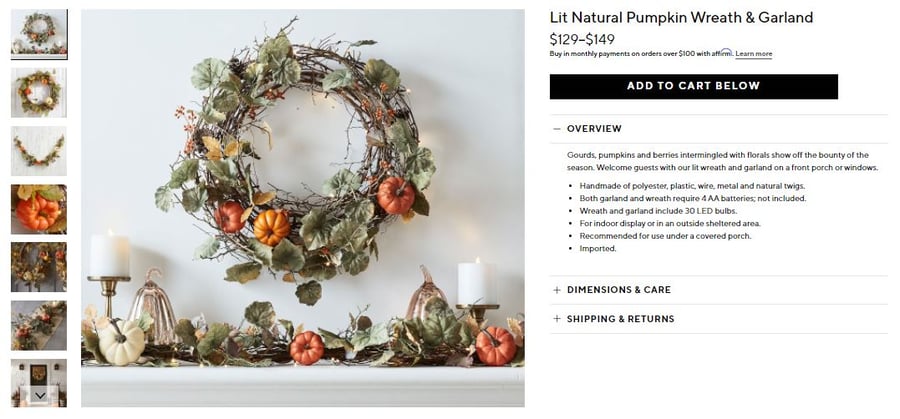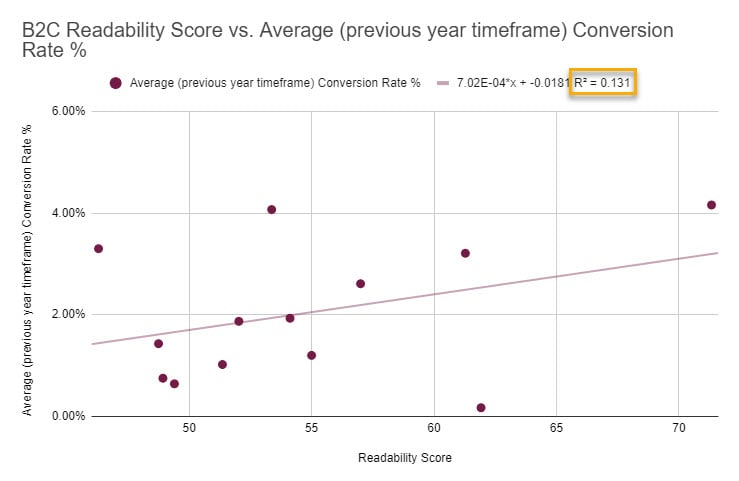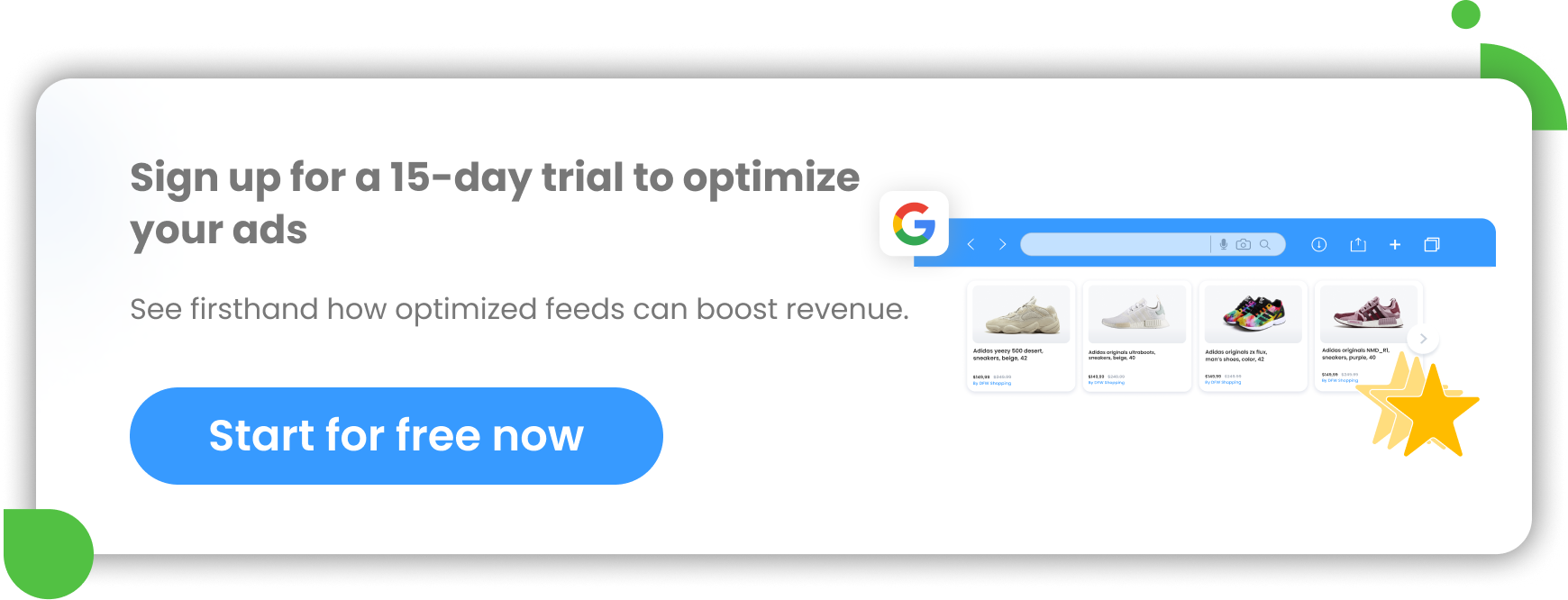If you want a product page on your e-commerce site to rank, your copywriting should give web crawlers all the information they need to index your page.
But at the end of the day, if the product description doesn’t help customers make purchasing decisions, it’s not doing its job.
These seven steps can help you tick both boxes whenever it’s time to write a product description. Soon enough, you’ll be whipping up high-impact, SEO-friendly product descriptions that perform well in search and entice the potential customers who land on your site.
What are SEO Product Descriptions?
A product description page provides all the information about a particular product a customer would want to know — from product attributes like size and color, to price and where it was manufactured.
One of the biggest e-commerce websites in the world, Amazon, does a great job at writing SEO product descriptions:
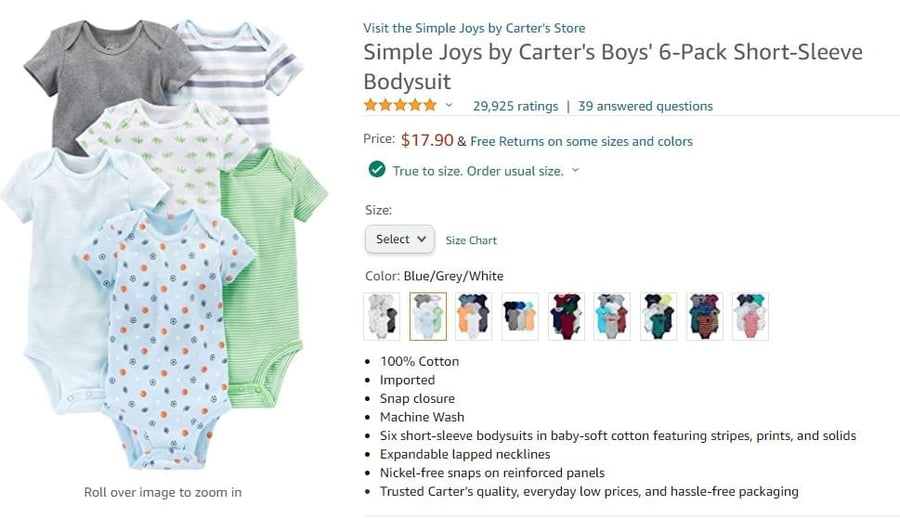
3 reasons why product descriptions are important for SEO
The main reasons why product descriptions are important for SEO are the following:
- Fully optimized product descriptions are one of the main ways to boost SEO rankings. Boosting rankings equates to greater product visibility and an increase in website traffic.
- Product descriptions can make-or-break user experience. If they are written well and provide all of the necessary information, consumers will be able to make a well-informed purchase decision.
- By increasing rankings, website traffic and user experience, product descriptions also contribute to boosting conversion rate. This means more sales and revenue for your ecommerce business.
7 best practices for writing SEO-friendly product descriptions
Follow these seven steps to write high-impact, SEO-friendly product descriptions that boost performance.
1. Write with your buyer personas in mind
You can use buyer personas to inform all aspects of your e-commerce marketing, including how you write SEO product descriptions.
A buyer persona is a profile of your dream customer, built using information about consumers who purchase from you. Buyer personas should include:
- Demographic information about your ideal customer
- Motivating factors that drive your buyer to search for products and ultimately make a purchase
- The emotional transformation they experience before and after buying your product
- Objections or misconceptions they have about your product or brand overall
- Marketing messages and sales tactics that do and don’t resonate with your ideal customer
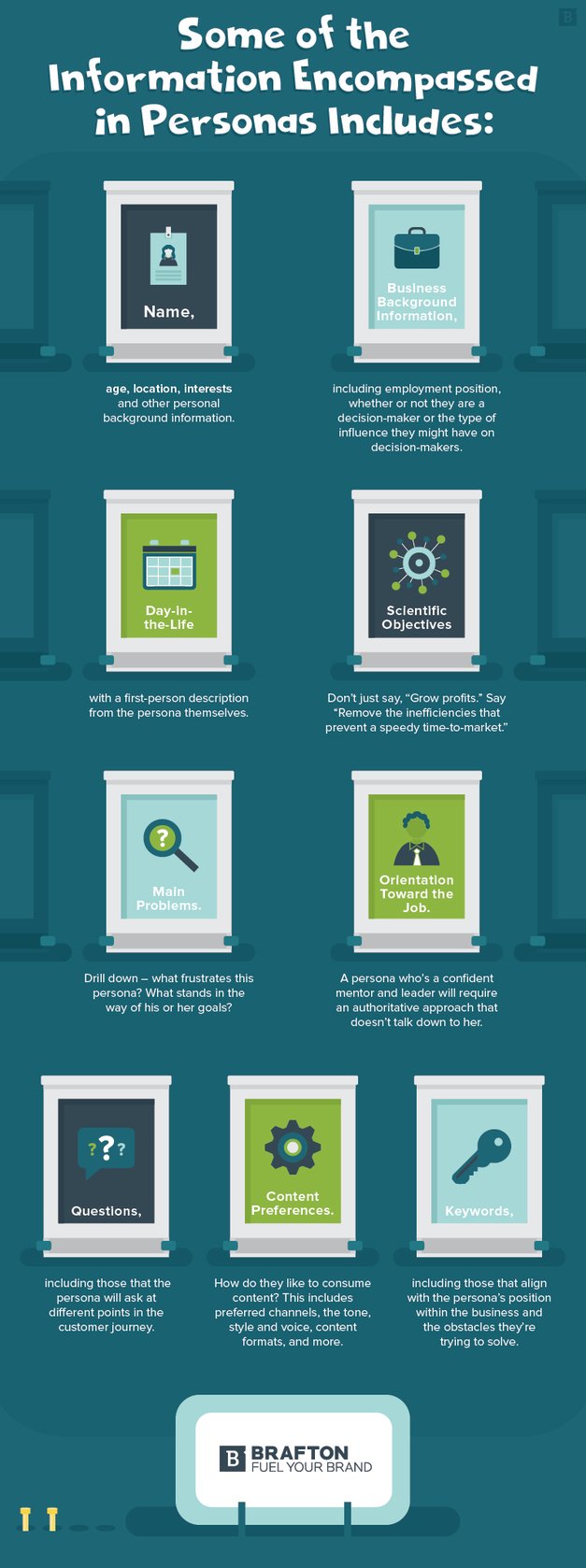
When you know what makes your ideal customers tick, you can strategically write product descriptions that will resonate with them.
For example, a brand that sells planners to small business owners are aware that their customers find organization and task management challenging. .
This enables the business to tap into their customer motivations and desired emotional transformation, by describing how the planners will help them achieve the calm, confident and organized state they desire.
2. Write product descriptions in your customer’s own language
Using your buyer personas, write product descriptions that feature the same words and phrases your customers use to talk about your products. If you don’t, you face a few risks:
- Your brand will appear irrelevant to shoppers
- It’ll impact the discoverability of your products
- You miss out on sales opportunities for using the wrong vocab.
In other words, if your target audience is shopping for “to-may-toes” and you’re selling them as “to-mah-toes,” you’ll never have the chance to win their business.
For instance, what one shopper would describe as a “sundress,” another might call a “casual summer dress.” Distinct generational and regional lingo may also impact how you describe your offerings.
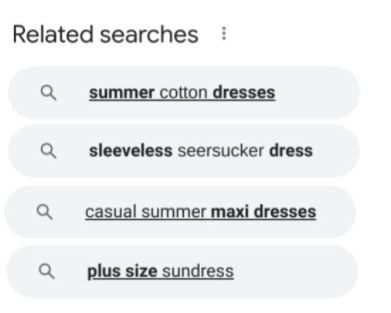
Take a look at these examples:
1.
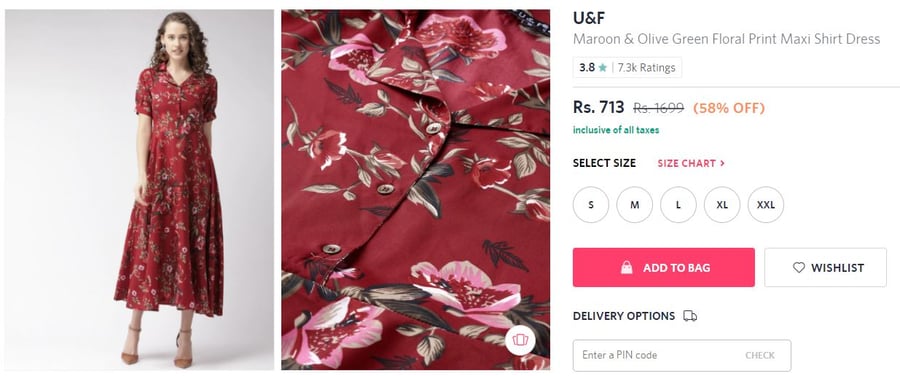
2.
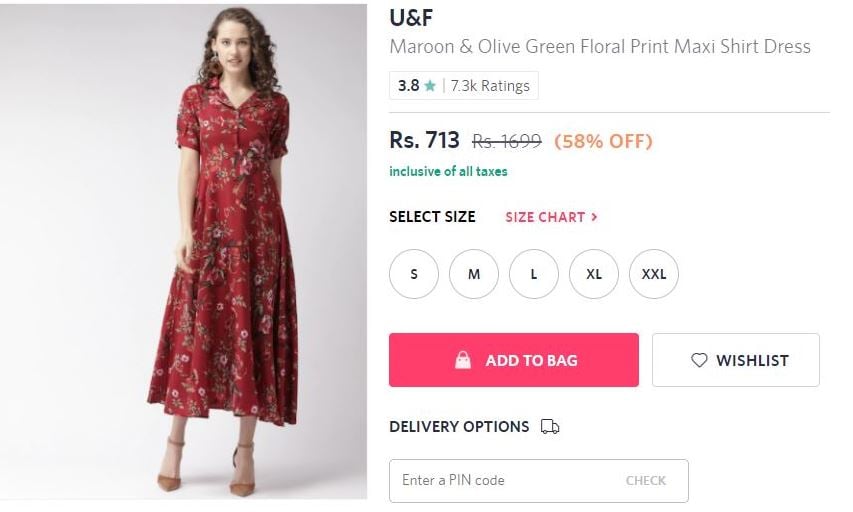
As you can see, even though it is the exact same dress, the way it’s named is different. Keep in mind whether or not your potential customers are looking for a “floral print maxi shirt dress” or “one-piece frock for ladies”?
3. Focus on the needs of your target audience
An SEO-friendly product description should describe an item in the most technical terms possible, right? Wrong!
Until your potential buyers are seriously comparing product specs, they won’t be excited by physical properties and factual details.
Instead, write about the benefits your product offers. You can do this by mapping distinguishing features to your customer’s needs. And even if your product isn’t super functional or need-fulfilling, it undoubtedly can fulfill a shopper’s desires.
For example, if you’re selling a purely decorative autumnal wreath, your shopper won’t be inspired by the dimensions of the plastic leaves and pumpkins. But they’ll be eager to buy after reading about how the décor can welcome guests and invite the warmth and bounty of the season into their home.
4. Optimize product descriptions for search engines
If you want your products to rank well in search, you need to weave the right keywords into your product descriptions. This is how to write SEO-friendly product descriptions.
A keyword research tool can help you uncover target keywords at the appropriate search volume and keyword difficulty for your ecommerce site.
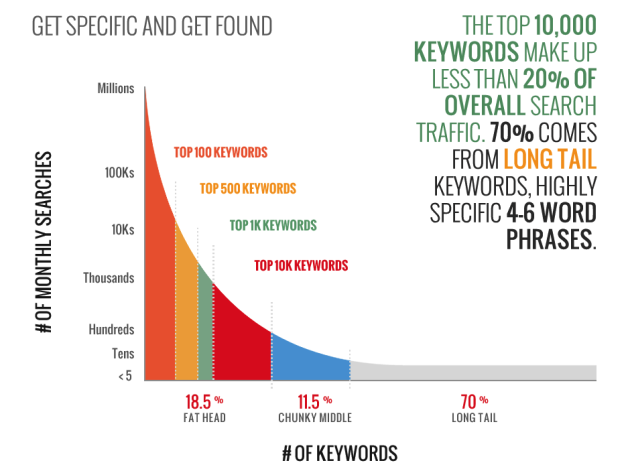
With a little extra research, you can gather related terms and long-tail keywords. These show you what details to include in your description to make it as specific and comprehensive as possible. Plus, they ensure your SEO-friendly description shows up for customers who are looking for your exact offering.
For instance, a broad keyword like “bug repellent” is going to be competitive. Leading brands will dominate page 1. Something more specific like “natural bug repellent for kids,” will reach the right consumers and help you achieve a higher ranking.
5. Understand user intent when choosing keywords
Speaking of keywords, target the ones that reveal the right user intent. There are several different types of user intent, but these are the most important when choosing keywords for online product descriptions:
- Informational intent: Keywords like “how to make zucchini noodles” and “what are zoodles” reveal that a user is looking for information.
- Commercial intent: Keywords like “best zoodle maker” or “spiralizer for zucchini” suggest a user is looking for products they can buy.
- Transactional intent: Keywords like “spiralizer coupon” or “best price for zoodle maker” show that a user wants to make a purchase.
- Navigational intent: Keywords like “Padermo zucchini noodle maker” indicate the users knows what they want.
Keywords signifying informational intent have a low conversion rate, because these consumers are looking for information, not products.
Instead, commercial, transactional and navigational intent keywords have higher conversion probability, making them the key focus.
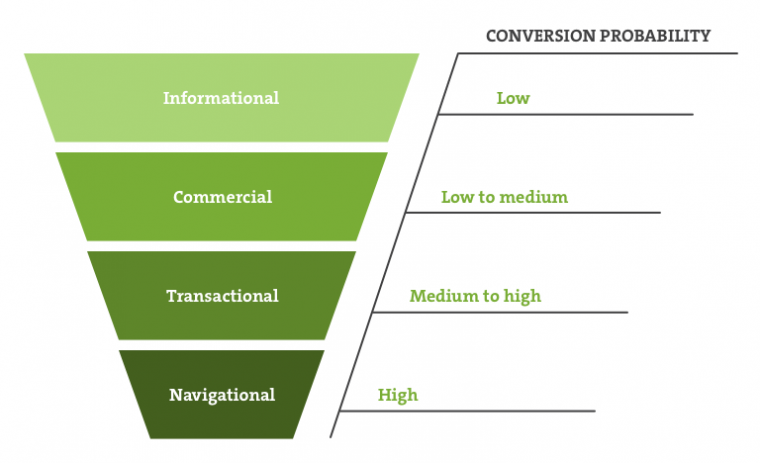
Informational intent keywords can have higher search volume, so consider using a content creation strategy and writing blog posts instead, to help answer these queries and build brand awareness.
6. Write product descriptions that embrace your brand voice
The product descriptions you write should be distinctive and unique to your brand. Even if you carry the exact same products as another retailer, the way you describe the benefits and the story you tell is what really makes an impression on prospective buyers.
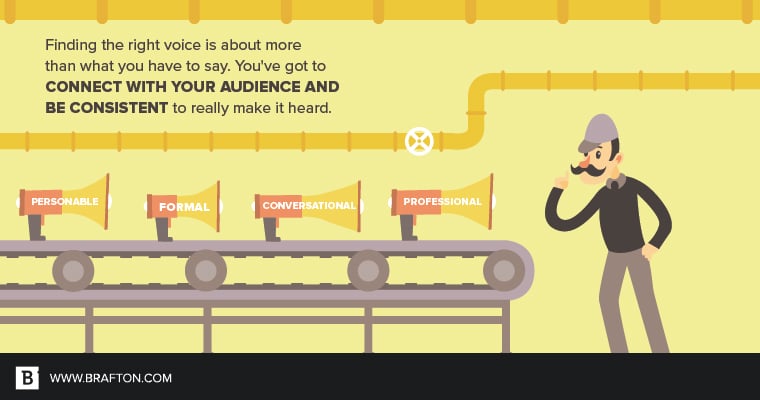
Whether your brand voice is personable, formal, conversational, professional or something else, keep the tone you use consistent across all customer touchpoints — from social media captions and email marketing to your blog. This helps establish an instantly recognizable brand personality. That familiarity makes people want to buy, whether they encounter your products on Instagram, your interactive catalogue, or your e-commerce site.
A perfect example of this is Sephora. The way they speak to their audience on Instagram is as casual and upbeat as the way they describe their products on their website.
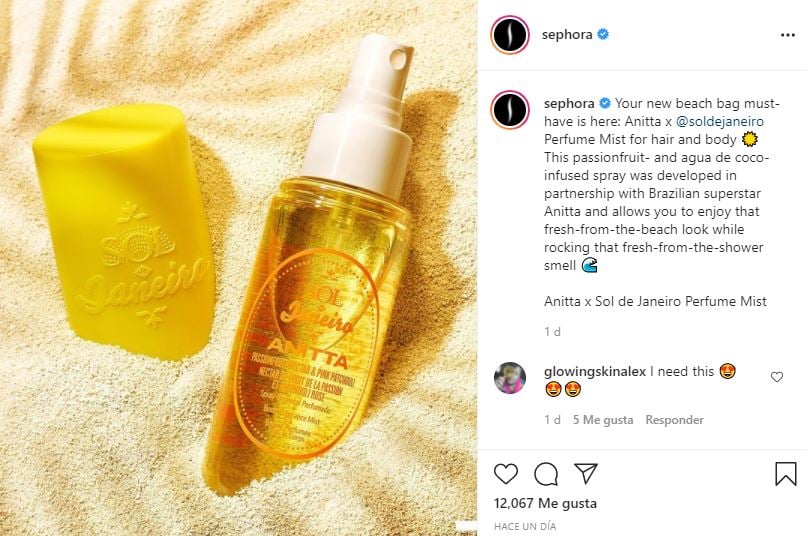

7. Don’t forget about product description readability
Write product descriptions that are straightforward and skimmable. According to Portent, 13% of a B2C conversion rate depends on the readability score of the site.
Use these writing tips to make information easier for potential customers to consume:
- Create skimmable sections of copy, broken up with headers and white space.
- Use short bullet points when listing out product details.
- Avoid long convoluted sentences and flowery language.
- Try concise storytelling to highlight your product’s benefits.
- Write mobile-friendly product descriptions.
For shoppers that need more detail, consider adding expanding sections or tabs that lead to more information, which is what IKEA do:
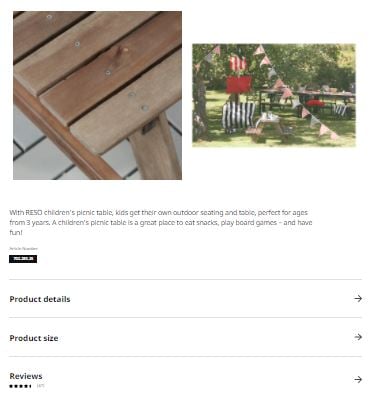
Write SEO product descriptions that boost sales
When done right, product descriptions can get noticed by search crawlers, rank well and ultimately win over shoppers. This makes them an effective strategy for boosting sales.
Marketers that are struggling to write SEO-friendly, high-converting product descriptions should seek further support. Comment below the biggest challenge you face when writing effective product descriptions.
